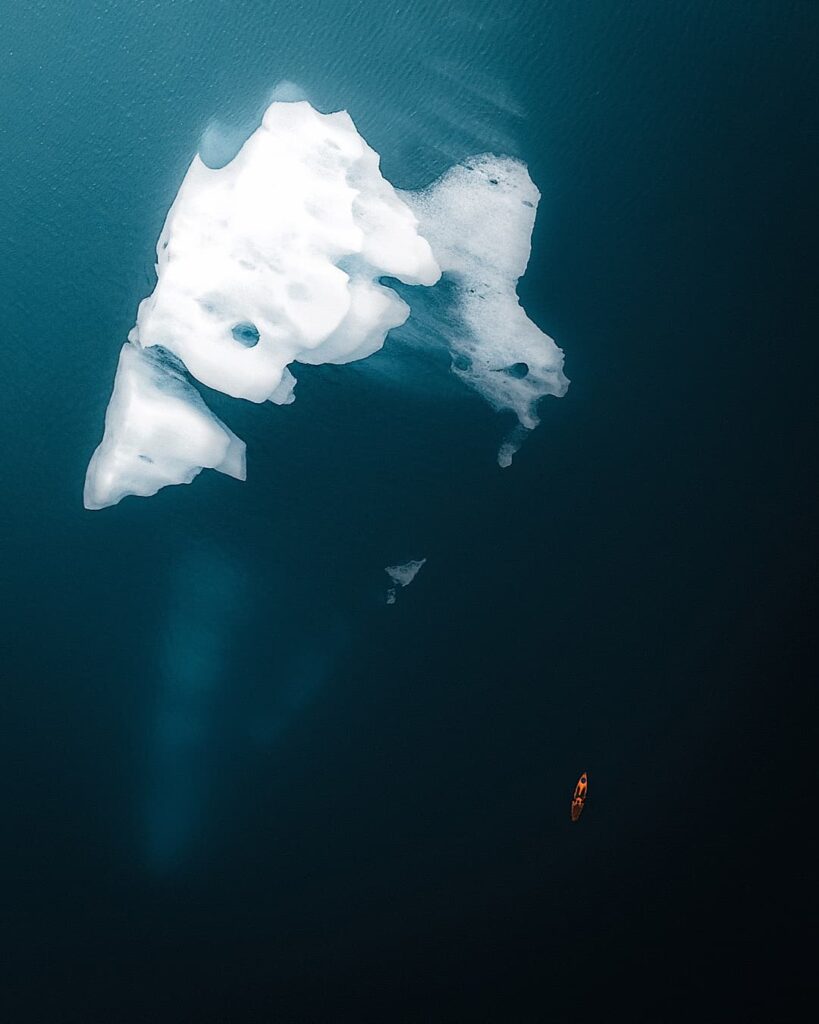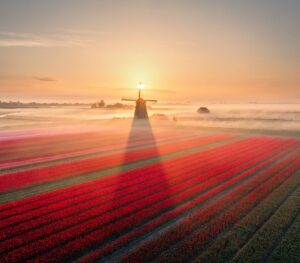
Photo tour in Azores, Portugal
Join us in the Azores for a unique photo tour, where you’ll elevate your creative skills with expert guidance from Ronald Soethje, Bruno Ázera, and Nomadict.
Dustin finds inspiration in the wilderness and moody landscapes, and his art is as much about adventure as it is about photos. Thus, Dustin surrenders control to chance, aiming to photograph memorable images with complete freedom. The in-between and small moments serve as his art’s foundation, allowing him to show the grand landscapes he loves so much.
When I was pretty young, I had this teacher who read us a novel by Don Fendler called “Lost On A Mountain In Maine”. As the days went by and as the tale unraveled, I was enthralled with the idea of being “lost” in the wilderness. We moved around a lot, and by my early teens, I found myself in the backwoods of Eastern Kentucky.
I spent hours exploring those woods, jumping in rivers, and walking along creek beds. The camera came into my life later when I finished college and moved across the country to the PNW. I spent so much time in search of grand landscapes, and I thought: Why not snap some photos too?
From the very first photo, my love for the camera was forever solidified. My Aunt also had an influence in this regard, as she always begged us to take photos of ourselves when we were growing up – for the memories. As a little kid, it annoyed me, but as I grew up and looked through her old albums, I realized the importance of capturing moments. Whether she knows it or not, those little disposable Kodak cameras affected me on such a deep level.
Every second spent in the wilderness is a remarkable moment to me, honestly, but my first time in the North Cascades of Washington comes to the top of my mind.
When I first moved to the PNW, I hiked Larch Season along Cutthroat Pass. I snapped photos with my iPhone, but I wished I had a better tool to capture the scene in front of me. That singular week in the Cascades showed me the beauty I had only seen in magazines and on television.
Then I took a three-month road trip all over the US the following year, visiting 19 National and State parks – with my first camera in hand. I learned so much, and I owe most of my skills to those days honing my artistry.
In addition, I have always appreciated moody weather. Something about the fog and mist-covered conifers speaks to me. On a scouting trip in Mount Rainier National Park, I woke up to photograph Tahoma and found myself surrounded by fog. I didn’t get any photos of Washington’s favorite mountain, but I did get plenty of the trees around it. After that, I was hooked on finding those same conditions.
So nowadays, my art it’s just as much about the adventure and the journey as it is about the photos. My pursuit of unique conditions comes from refusing to believe a photo location is “inaccessible” during a certain time of year. Sure, it will be harder to get to, but oftentimes, it isn’t inaccessible.
My photos of the peaks in the Cascades are a perfect example – I drove through the snow to a hike rarely done in winter conditions. I threw my snowshoes on and trekked away before the break of dawn. To prepare I looked up the sun’s rising point, picked the peaks to shoot, and checked weather patterns to get the shots I had in my mind.
Furthermore, my photo of Mt. Baker wilderness will always be close to me. I took it only a few months after I bought my first camera. It’s not even on my feed because I didn’t know how to edit a photo when I started, and I lost the RAW files due to technical malfunctions. But to this day, I consider this image one of the best shots I’ve ever taken.
In general, photography is an art that requires a combination of technical skills, creativity, and luck. As the photographer, you have some control over the location, lighting, and weather, but luck often plays a significant role in capturing the perfect shot. For some photographers, embracing the element of chance and being spontaneous can lead to some of their best photographs.
In general, photography is an art that requires a combination of technical skills, creativity, and luck. As the photographer, you have some control over the location, lighting, and weather, but luck often plays a significant role in capturing the perfect shot. For some photographers, embracing the element of chance and being spontaneous can lead to some of their best photographs.
In my case, I can be pretty chaotic in my approach sometimes. I pick a location, drive there, and then go with it. It is fun, and I have gotten some of my best photos exploring with no intentions.
This approach is enjoyable and allows for exploring without specific goals, feeling completely free. By surrendering control to chance, you can capture unique and unexpected moments that you may not have encountered if you had a strict plan.
However, this approach may not work for everyone, and some photographers may prefer to plan and carefully consider their location, lighting, and weather to achieve a specific vision. Ultimately, the approach that works best for each photographer is a matter of personal preference and style. Whether it is planned or spontaneous, the goal remains the same – to capture beautiful, compelling, and memorable images. And for that, the in-between and little moments are essential components of a story, particularly in landscape photography.

Grand landscapes are often so fantastic and awe-inspiring that it can be intimidating to try and capture their grandeur in a way that does justice to their immensity. However, by including the smaller moments, a photographer can create a more complete and compelling story.
The small moments serve as the foundation and set the scene for the viewer. They provide context and help the viewer understand the landscape on a deeper level. By showing the smaller moments, the photographer can also convey the atmosphere, mood, and energy of the landscape, making the image more meaningful and impactful.
Additionally, capturing the small moments can add a sense of scale and provide a visual reference point, allowing the viewer to better appreciate the grandeur of the landscape. The in-between and little moments give the story depth and make the landscape come alive. And I think you can apply this mindset to your everyday life.
The pursuit of a grand landscape refers to the drive towards a big picture, a major goal, or a significant objective. It could be personal, professional, or organizational. In this quest, we tend to become so focused on the end goal that we often forget about the small, yet crucial elements that make up the journey. The smaller scenes, the in-between moments, and the little details are just as important as the grand landscape itself. They form the foundation, provide the context, and shape the experience of the journey.
By focusing solely on the grand landscape, we risk missing out on valuable opportunities, experiences, and growth. These smaller moments may offer unique challenges and insights and often bring out the best in us. They may even lead us to change our approach or perspective, leading to better outcomes. Moreover, they create memories and add depth to the journey, making it more meaningful and rewarding.
Thus, I believe it’s essential to appreciate the value of the smaller scenes, in-between moments, and little details in the pursuit of a grand landscape. They are just as important and should be given the same consideration and attention. By doing so, we can ensure a more fulfilling and meaningful journey, both personally and professionally.
Oh, and don’t forget to take off your lens cap, check your SD storage, and make sure your battery is charged – we’ve all been there, I think.
Then, back home and while editing, I go through a simple 6-step process for every photo:
– Crop
– Exposure/White Balance calibration
– Color calibration
– Toning
– Lighting changes with gradient/radial filters
– Tinting.
My approach to editing a photo is to show not only how the location I’m shooting looks to me but also the way it makes me feel when I think back to my time there. It’s hard to explain unless you’ve experienced it but the atmosphere of a place can evoke very specific feelings.
I want my photos to evoke those same emotions in the people viewing them. Nature is beautiful all on its own, it doesn’t need that much help, but cameras have their limitations, so editing is a necessary step.
In 10 years, I will be a full-time photographer. I do not doubt it in my mind. I think one of the biggest things helping me move toward this goal is my ability to talk to just about anyone.
Pitching yourself to a company or travel agency isn’t about followers and engagement like people seem to think. Building a good portfolio and showing you do consistent work and making honest connections are more important than a number on social media. It’s something I wish I realized sooner. Consistent, quality work can get you pretty far in this profession.

Join us in the Azores for a unique photo tour, where you’ll elevate your creative skills with expert guidance from Ronald Soethje, Bruno Ázera, and Nomadict.

In this article, Forest shares how years of chasing scale, silence, and raw landscapes shaped his approach to photography, from the deserts of Kazakhstan to the volcanic ridges of Iceland. He talks about how he uses light, texture, and vast negative space to create images that feel both intimate and overwhelming.

Simon shares the journey behind his photography, from early inspirations to field techniques, editing, and the story of the winning shot that shaped his path.

In this article, Miro shares how his love for cinematic music evolved into a deep passion for photography and how he uses light, color, and atmosphere to turn the streets of Prague into living film scenes.

In this article, Stefanie reveals how her background in physics sparked her passion for astrophotography and how she blends science with creativity to capture the beauty of the night sky. Readers will discover her approach to color, contrast, and editing, as well as her aurora photography workflow.

Spanish photographer Yhabril captures the profound connection between humans and the mountains that shaped him. Growing up in the Pyrenees, his work bridges outdoor sports, landscapes, and celestial scenes — often blending athletes, moonlight, and wilderness into striking visual stories.

In this article, Ariane shares how photography helped her navigate personal challenges, connect authentically with people and animals, and develop a philosophy rooted in empathy and artistic freedom. Readers will also discover her ethical approach to wildlife photography and her trusted equipment for both camouflage techniques and cameras.

Discover how to photograph Dutch tulip fields in their most magical light. From choosing the right gear and lenses to mastering composition, color, and aerial perspectives, this guide shares creative techniques to capture the beauty of the Netherlands’ tulips. Learn how light, color grading, and proportion bring emotion into every frame.
